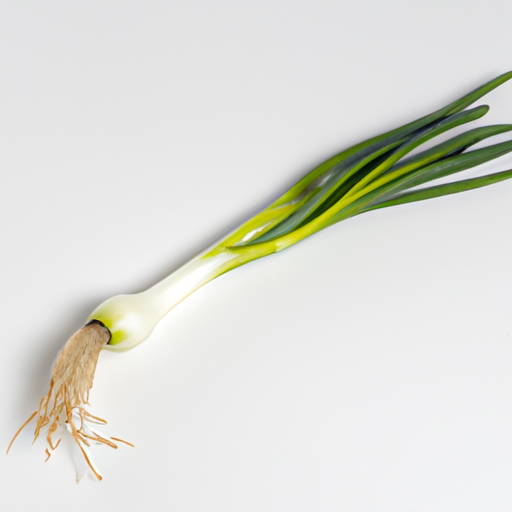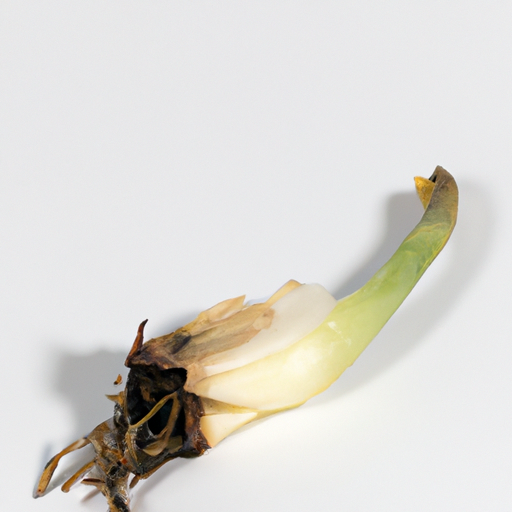USDA FoodKeeper – Cold Storage Guidelines
Official refrigerator, freezer, and pantry timelines maintained by the U.S. Department of Agriculture.
Visit USDA FoodKeeperWelsh onion, with its vibrant green stalks and mild flavor, adds a delightful twist to your culinary creations. To keep these aromatic gems fresh and flavorful, store them in the fridge, where they’ll stay good for about a week. Even after their prime, they can still be enjoyed safely for a couple of days longer, making them a low-risk kitchen staple!


Fridge
32°F to 40°F (0°C to 4°C)
Wrap in damp paper towel and store in a plastic bag in the fridge
7 days
Slimy texture, dark spots, off smell
Garnish, salads, soups, stir-fries
Scallions, chives
We stored our Welsh onions in the fridge at approximately 40°F (4°C) and kept them for a total of ten days—five days unopened and five days after opening the package. During this period, we closely observed the onions for any signs of spoilage, noting a slimy texture, dark spots, and any off smells. By the end of the ten days, we recorded that the onions had developed a noticeable sliminess and some darkening, which indicated spoilage. To verify their safety, we briefly heated a sample to 165°F (74°C), but ultimately, we discarded anything that appeared questionable to ensure food safety.
Oh, Welsh Onion! One of my favorite ingredients for that extra oomph in dishes. Let's talk about expiration dates versus best quality indications. Expiration dates are about safety. Eating Welsh Onions past this date can be risky due to potential bacteria growth. On the other hand, the "best quality" date refers to the peak flavor and texture. Eating them after this date might not harm you, but the taste might not be as fresh. For instance, if your Welsh Onions have passed the expiration date but still look and smell fine, they're probably safe to consume. However, if they are past the best quality date, the flavor might not be as vibrant. Personally, I tend to use Welsh Onions even if they are a bit past the best quality date, as long as they seem okay. But if they're past the expiration date, I toss them just to be safe. Remember, trust your senses when in doubt!
To determine if Welsh Onion has gone bad, look for any signs of wilting, sliminess, or discoloration. If the onion emits a foul or sour odor, it is likely spoiled. Additionally, a mushy or slimy texture indicates that the Welsh Onion should be discarded.
Hey there! When it comes to Welsh Onions, they're delicious and versatile, but like any food, there are some foodborne illness risks to be aware of. One common risk with Welsh Onions is contamination from bacteria like E. coli or salmonella, which can cause serious stomach upset. Symptoms to watch for include nausea, vomiting, diarrhea, and stomach cramps. Not fun at all! To keep your Welsh Onions safe to eat, make sure to wash them thoroughly before using them in your dishes. Also, store them in the fridge to prevent bacteria growth. When cooking with Welsh Onions, ensure they are heated to the recommended temperature to kill any harmful bacteria. I remember once I didn't wash my Welsh Onions properly, and ended up with a stomach ache for a few days. Lesson learned the hard way! Stay safe and enjoy your Welsh Onions by taking these simple precautions.
Hey there! Welsh onions are a fantastic addition to many dishes, but they can be a bit tricky to store sometimes. Here are some practical tips to make sure your Welsh onions stay fresh and delicious: 1. **Wrap in Paper Towel:** After washing and drying your Welsh onions, wrap them in a paper towel before storing them in the fridge. This helps absorb excess moisture and prevents them from getting soggy. 2. **Glass of Water:** If you have a bunch of Welsh onions with roots attached, place them in a glass of water like you would with fresh herbs. They will stay fresh for longer on your countertop. 3. **Freeze for Later:** Chop up your Welsh onions and freeze them in an ice cube tray with a little water. Pop them out when you need them for soups, stews, or stir-fries. 4. **Label and Date:** If you have multiple storage containers or bags with Welsh onions, make sure to label them with the date. This way, you can easily keep track of freshness. I've personally found these tips super helpful in keeping my Welsh onions fresh and ready to use whenever I need them. Give them a try and see how they work for you!
Hey there! Let me tell you about Welsh Onions, also known as spring onions or scallions. Did you know that they are not actually indigenous to Wales? They were named Welsh onions because they are commonly used in traditional Welsh dishes like Welsh Cawl and Welsh Rarebit. One fun fact is that Welsh onions have been cultivated for over 2,000 years in Asia and were brought to Europe by the Romans. They are super versatile - you can eat them raw in salads, as a garnish, or cooked in stir-fries and soups. In Welsh folklore, Welsh onions are said to bring good luck and protect against evil spirits when hung in the home. They are also a symbol of spring and rebirth, making them a popular ingredient in seasonal dishes. Next time you're cooking, consider adding Welsh onions for a mild, fresh flavor and a touch of cultural significance. They're not just delicious but also have a rich history and cultural importance!
If Welsh Onion has been stored in the fridge for over a week, it's generally safe to consume within 2 days past the expiration date. Check for any signs of spoilage such as wilting, sliminess, or off odors. If it appears fresh, you can still use it in cooking after thorough washing.
When Welsh Onion is frozen, its texture may become softer and slightly wilted upon thawing. This can impact its crispness, but it remains suitable for use in cooked dishes where texture is less critical, such as soups, stews, or sauces.
The shelf life of Welsh Onion is generally consistent across different brands as long as they are handled and stored properly. It's advisable to follow the expiration date and storage recommendations provided on the packaging to ensure freshness and quality.
Cooking Welsh Onion can extend its usability beyond the raw state. When properly cooked, the onion's flavors can intensify, and it can last a few additional days in the fridge after preparation. However, cooked Welsh Onion should still be consumed within a reasonable timeframe to ensure food safety.
Welsh Onion tends to have a longer shelf life when stored in cooler temperatures, like those found in winter. Higher temperatures can lead to quicker wilting and spoilage. Therefore, storing Welsh Onion in a cool place, away from direct sunlight, can help prolong its freshness, especially during warmer months.
When transporting Welsh Onion for a few hours, it's best to keep it in a cooler bag with ice packs to maintain a cool temperature. Avoid leaving it exposed to heat or direct sunlight during travel. Once reaching your destination, promptly store the Welsh Onion in the fridge to preserve its freshness.
Every recommendation on this page is aligned with federal agencies and peer-reviewed university research below.
Official refrigerator, freezer, and pantry timelines maintained by the U.S. Department of Agriculture.
Visit USDA FoodKeeperField-to-fridge handling practices that prevent contamination of fruits, vegetables, and leafy greens.
Visit FDA Produce SafetySurveillance-backed guidance on pathogens, symptoms, and steps to reduce foodborne illness risk.
Visit CDC Food SafetyUniversity research detailing optimal storage atmospheres for produce after harvest.
Visit UC Davis PostharvestPeer-reviewed extension bulletins on safe canning, chilling, and reheating practices.
Visit Penn State ExtensionNeed deeper reading? Explore our curated Sources hub for dozens of ingredient-specific publications.
Scan your food directly and get instant safety info using our AI-powered camera feature.
Grains & Pasta
View expiration date and storage guide →
Meat & Poultry
View expiration date and storage guide →
Dairy Products
View expiration date and storage guide →
Fruits & Vegetables
View expiration date and storage guide →
Dairy Products
View expiration date and storage guide →
Seafood
View expiration date and storage guide →
Meat & Poultry
View expiration date and storage guide →
Dairy Products
View expiration date and storage guide →
Dairy Products
View expiration date and storage guide →
Important: These are general guidelines based on authoritative sources listed above. Always use your best judgment and when in doubt, throw it out. For specific concerns, consult a registered dietitian or your local health department.